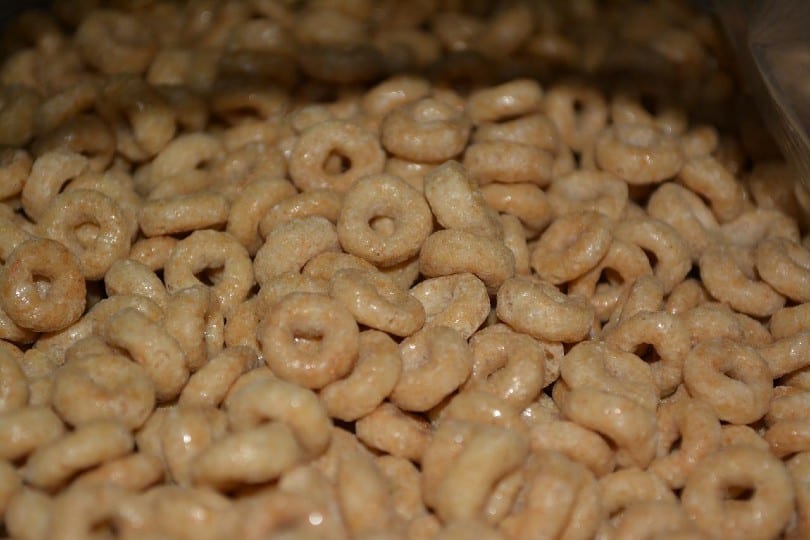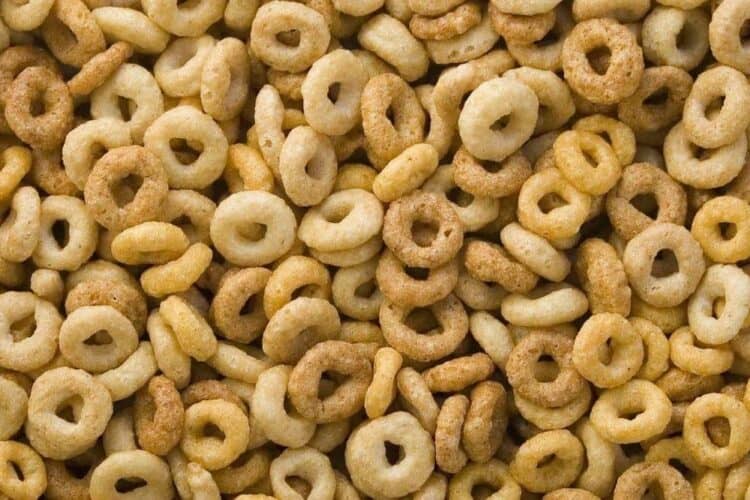If you’re like most dog owners, you’ve probably given your furry friend a few Cheerios here and there. And if you’re like most dog owners, you may have wondered whether or not Cheerios are actually good for dogs. The answer to that question is a little complicated. In this blog post, we’ll explore the pros and cons of feeding Cheerios to dogs, as well as what to do if your dog eats one.
Are Cheerios Toxic To Dogs?
The short answer is no, Cheerios are not toxic to dogs. However, there are a few things you should keep in mind before feeding them to your pup.
First, Cheerios contain sugar. And while a little sugar here and there isn’t necessarily harmful to dogs, too much sugar can lead to obesity and other health problems. So, if you do feed your dog Cheerios, be sure to do so in moderation.
Second, some flavors of Cheerios contain xylitol. Xylitol is a sugar alcohol that is often used as a sweetener in sugar-free gum and other products. It’s safe for humans, but it can be toxic to dogs. If your dog eats a Cheerio (or any other food that contains xylitol), be sure to monitor them closely for signs of xylitol poisoning, which can include vomiting, lethargy, and seizures.
Are Cheerios Healthy For Dogs?
Now that we’ve answered the question “are Cheerios toxic to dogs?” let’s move on to the question of whether or not they’re actually healthy for dogs. The answer to this question is a little less clear.
On the one hand, Cheerios are made with whole grains, which are generally considered to be healthy for dogs (and humans). They’re also low in calories and fat, which makes them a decent choice for dogs who are trying to lose weight.
On the other hand, Cheerios are high in sugar and carbs. And while whole grains are generally considered to be healthy, some experts believe that dogs (and humans) should limit their intake of carbs. So, if you’re concerned about your dog’s carb intake, Cheerios may not be the best choice.

What Are the Benefits of Cheerios For Dogs?
In addition to being low in calories and fat, Cheerios have a few other benefits that make them a good choice for dogs.
First, Cheerios can help clean your dog’s teeth. The crunchy texture of the cereal helps remove plaque and tartar from your dog’s teeth, which can help prevent gum disease.
Second, Cheerios are a good source of fiber. Fiber is important for dogs (and humans) because it helps regulate digestion and keep things moving through the digestive system. And since constipation is a common problem in dogs, the fiber in Cheerios can be a big help.
Finally, Cheerios are a good way to keep your dog occupied. If you’re looking for a healthy treat to keep your dog busy, Cheerios are a great option. Just be sure to supervise your dog while they’re eating, as they may try to eat the whole box in one sitting!
What Are the Risks of Cheerios For Dogs?
As we mentioned before, Cheerios are high in sugar and carbs. And while whole grains are generally considered to be healthy, some experts believe that dogs (and humans) should limit their intake of carbs. So, if you’re concerned about your dog’s carb intake, Cheerios may not be the best choice.
In addition, Cheerios are a choking hazard for dogs. If your dog tries to eat a Cheerio whole, it could get stuck in their throat and cause them to choke. So, be sure to supervise your dog while they’re eating Cheerios (or any other food), and make sure they’re chewing their food properly before swallowing.
If You Think Your Dog Has Eaten a Cheerio, What Should You Do?
If you think your dog has eaten a Cheerio (or any other food that contains xylitol), be sure to monitor them closely for signs of xylitol poisoning, which can include vomiting, lethargy, and seizures. If you notice any of these symptoms, contact your veterinarian immediately. Otherwise, your dog will likely be fine.
Conclusion
Even though cheerios are generally not toxic to dogs, they should only be given in moderation. They contain a lot of sugar and carbs which can be harmful if consumed in large quantities. In addition, they pose a choking hazard to dogs. So, make sure you keep an eye on your dog while they’re eating them, and don’t give them too many!
Featured Image Credit: Pixabay
















